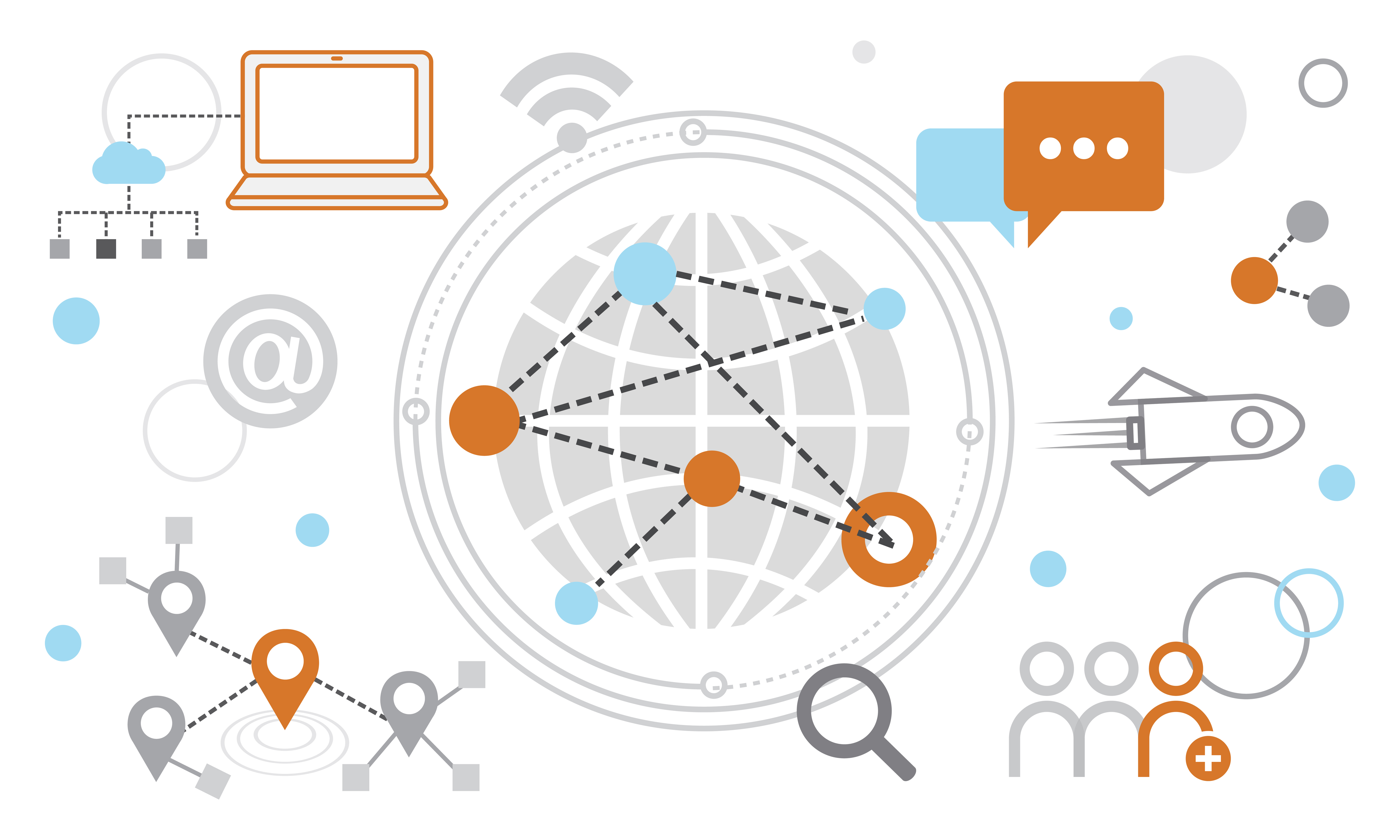Comparing Point-To-Point Leased Lines (P2P) With Wavelength Circuits
-
April 23, 2024
-
6 min read

The need for reliable, high-speed connectivity is paramount for businesses of all sizes. Two popular options for achieving this connectivity are point-to-point (P2P) leased lines and wavelength circuits. Both solutions offer dedicated bandwidth, low latency, and secure connections but they differ in various aspects, such as scalability, flexibility, and cost.
In this article, we delve into a comprehensive comparison of point-to-point (P2P) leased lines and wavelength circuits, exploring their features, benefits, drawbacks, and suitable use cases.
Understanding Point-To-Point (P2P) Leased Lines
Point to point leased lines establish a direct, private connection between two locations, typically owned and managed by a single service provider. These dedicated lines offer symmetrical bandwidth, which means, the upload and download speeds are the same, ensuring consistent performance for data transfer, voice, and video applications.
P2P leased lines operate on Layer 1 of the OSI model, providing a transparent and secure communication channel.
Characteristics Of P2P Leased Lines:
- Dedicated Connectivity: P2P leased lines provide exclusive bandwidth for the connecting sites, ensuring reliable and consistent performance without contention from other users.
- Low Latency: P2P leased lines offer low latency by bypassing public networks, making them ideal for latency-sensitive applications such as real-time communications and financial transactions.
- Security: P2P offer inherent leased line security, as the data traverses a dedicated, private connection, reducing the risk of interception or data breaches.
- SLA Guarantees: Service Level Agreements (SLAs) accompany P2P leased lines, guaranteeing uptime, performance, and support levels, providing businesses with assurance and accountability.
Use Cases For P2P Leased Lines:
- Connecting Remote Offices: P2P leased lines are ideal for interconnecting geographically dispersed offices, enabling seamless communication and data transfer.
- Hosting Mission-Critical Applications: Businesses hosting mission-critical applications such as ERP systems, databases, or VoIP services benefit from the reliability and low latency of P2P leased lines.
- Backing Up Data: P2P leased lines facilitate efficient and secure data backups between locations, ensuring data redundancy and disaster recovery capabilities.
Understanding Wavelength Circuits
Wavelength circuits, also known as wavelength division multiplexing (WDM), utilise optical fibre technology to transmit data signals over multiple wavelengths or colours of light. Each wavelength operates as an independent channel, allowing for the simultaneous transmission of multiple data streams over the same fibre optic cable.
Wavelength circuits are typically offered by telecommunications carriers and provide high-capacity, scalable connectivity solutions.
Characteristics of Wavelength Circuits:
- High Capacity: Wavelength circuits offer high-capacity bandwidth, with each wavelength capable of supporting multiple Gbps or even Tbps of data throughput.
- Scalability: Wave circuits are highly scalable, allowing businesses to add or remove wavelengths as needed to accommodate increasing bandwidth demands.
- Multiplexing: Wavelength circuits employ dense wavelength division multiplexing (DWDM) or coarse wavelength division multiplexing (CWDM) techniques to multiplex multiple data streams over a single fibre optic cable, maximising bandwidth utilisation.
- Long-Distance Connectivity: Wavelength circuits enable long-distance connectivity over fibre optic networks, making them suitable for connecting geographically dispersed sites or data centres.
Use Cases for Wavelength Circuits:
- Data Center Interconnectivity: Wavelength circuits are commonly used to interconnect data centres, facilitating high-speed data transfer and replication between geographically distributed data storage facilities.
- High-Bandwidth Applications: Businesses with high-bandwidth requirements, such as media streaming, cloud computing, or big data analytics, benefit from the scalable and high-capacity nature of wavelength circuits.
- Internet Service Providers (ISPs): ISPs utilise wavelength circuits to expand their network capacity and support the growing demand for broadband internet access, enabling faster and more reliable internet connectivity for end-users.
Understanding The Difference Between P2P Leased Lines And Wavelength Circuits
1. Bandwidth and Scalability:
- P2P Leased Lines: While P2P leased lines offer dedicated bandwidth, they may have limited scalability compared to wavelength circuits. Increasing bandwidth typically involves upgrading the physical connection, which can be time-consuming and costly.
- Wavelength Circuits: Wavelength circuits provide high-capacity bandwidth that can be easily scaled by adding or removing wavelengths. This scalability makes them suitable for businesses with fluctuating bandwidth requirements or future growth plans.
2. Latency and Performance:
- P2P Leased Lines: P2P leased lines offer low latency and consistent performance, making them ideal for latency-sensitive applications. However, the performance may degrade if the physical connection experiences disruptions or maintenance issues.
- Wavelength Circuits: Wavelength circuits also offer low latency and high performance, particularly over long distances. The use of optical fibre technology minimises signal degradation and ensures reliable data transmission.
3. Cost:
- P2P Leased Lines: P2P leased lines typically involve fixed monthly costs based on the contracted bandwidth, with additional charges for installation, equipment, and maintenance. While the initial investment may be higher, the ongoing costs are predictable and may be cost-effective for businesses with stable bandwidth requirements.
- Wavelength Circuits: Wavelength circuits may involve higher initial costs for equipment and infrastructure, particularly for businesses requiring multiple wavelengths or long-distance connectivity. However, the scalable nature of wavelength circuits can result in lower per-unit costs for high-capacity bandwidth over time.
4. Flexibility and Manageability:
- P2P Leased Lines: P2P leased lines offer dedicated connectivity with full control and management capabilities. Businesses have the flexibility to prioritise traffic, implement Quality of Service (QoS) policies, and monitor performance metrics.
- Wavelength Circuits: Wavelength circuits provide flexibility in terms of bandwidth scalability and multiplexing capabilities. However, they may require more complex management and configuration compared to P2P leased lines, particularly for businesses deploying multiple wavelengths or advanced networking features.
5. Reliability and Redundancy:
- P2P Leased Lines: P2P leased lines offer high reliability and redundancy, as they operate on dedicated infrastructure with built-in failover mechanisms. Service Level Agreements (SLAs) typically guarantee uptime and performance levels, minimising the risk of service disruptions.
- Wavelength Circuits: Wavelength circuits also offer high reliability, but their redundancy may depend on the underlying fibre optic network and equipment. Businesses may need to implement redundant paths or backup solutions to ensure continuous connectivity during network failures.
Wrapping Up
Both Point-To-Point (P2P) leased lines and wavelength circuits offer reliable, high-speed connectivity solutions for businesses with demanding networking requirements. P2P leased lines provide dedicated bandwidth, low latency, and secure connections, making them suitable for businesses with stable bandwidth requirements and latency-sensitive applications.
On the other hand, wavelength circuits offer high-capacity scalability, long-distance connectivity, and multiplexing capabilities, making them ideal for businesses with fluctuating bandwidth needs or extensive network infrastructure.
Ultimately, the choice between P2P leased lines and wavelength circuits depends on factors such as bandwidth requirements, scalability, budget constraints, and network complexity, with businesses needing to evaluate their specific needs and objectives. Visit Airtel Business to learn more about it and explore other services too. Accelerate your business growth with high-performance internet leased line connection from Airtel.
Stay connected at all times with dedicated leased line delivering consistent internet speeds.
 Share
Share









